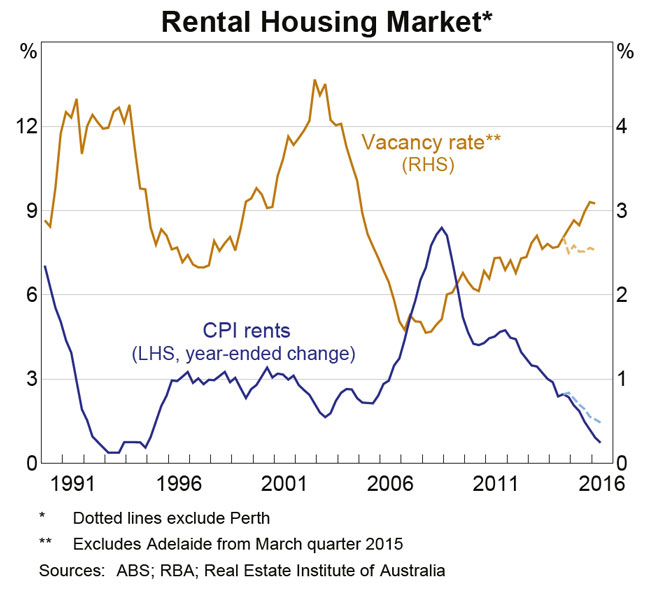The latest statement on monetary policy, released by the RBA today, discusses the normal range of issues. However, one point of note is the apparent overstatement of the CoreLogic home price data in April and May.
A range of indicators suggest that conditions in the established housing market have eased this year from very strong conditions over recent years. Housing prices were little changed in the June quarter according to most published measures. In contrast, the headline CoreLogic measure of housing prices recorded very strong growth in April and May in a number of cities, to be more than 5 per cent higher over the June quarter.
Recent information suggests that the strong increases reported by CoreLogic were overstated as a result of methodological changes affecting growth rates for the June quarter.
Here is what CoreLogic told their customers.
As part of continual efforts to improve our analytics, filters which are applied to the CoreLogic hedonic index methodology were updated progressively through April. Static price filters were previously applied to the hedonic index method which were designed to trim extreme transaction prices from the index calculation. In April, after a periodic model review, CoreLogic revised the filtering method to be dynamic. The model recalibration should reduce index volatility and provide more accurate measurements of capital gains going forward. Additionally, the price filter adjustment should alleviate seasonal changes that were historically evident in the index series during May and June. As a result of these changes, we recorded higher than normal intra-month volatility in the capital city index readings during April and May. The combined capitals index rose 1.7% in April and 1.6% in May before reducing to 0.5% growth in June and, most recently, 0.8% in July. The changes are part of a once off project aimed at improving the hedonic measurement of capital city home values. The next major iteration of improvement will occur over the second half of 2016 as we migrate our indices to the new ASGS capital city boundaries. This update will involve a revised back series of the hedonic index according to the new geography and we expect to release this to the market during Q4 2016.
The most recent data suggest that housing prices declined in most capital cities in July.
Other timely indicators of conditions in the established housing market continue to point to weaker conditions than last year. Auction clearance rates and the number of scheduled auctions are lower than a year ago and there has been a large decline in the number of transactions in the housing market, which is reflected in the turnover rate. In the private treaty market, the discount on vendor asking prices has been little changed of late, but the average number of days that a property is on the market has increased from the lows of last year.
Total housing loan approvals have been little changed in recent months. Meanwhile, housing credit growth has been steady in the first six months of the year but slower than in 2015, consistent with a relatively low level of turnover and the tightening of lending standards towards the end of 2015. The upswing in dwelling investment, particularly the construction of high-density dwellings, has continued, supported by low interest rates and earlier increases in housing prices. Residential building approvals are lower than their peak of mid 2015 but remain at high levels.
Indeed, building approvals have continued to exceed completions, resulting in the number of dwellings under construction or yet to be completed reaching historically high levels. The work in the pipeline is sufficient to underpin dwelling investment activity for the next couple of years.
Conditions in the rental market have continued to soften over the past year. The aggregate rental vacancy rate has drifted higher to be close to its longer-run average of around 3 per cent and rental inflation is around multi-decade lows, having eased across most capital cities. The Perth rental market is particularly weak, reflecting the slowing in population growth combined with ongoing additions to the housing supply.


4 thoughts on “RBA Suggests House Price Growth Was Overstated”